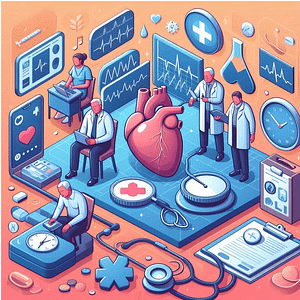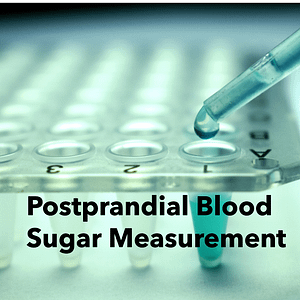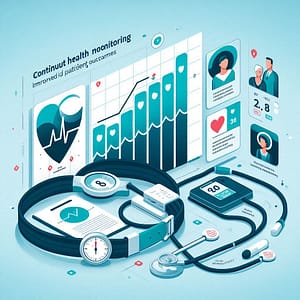Applications of RE.DOCTOR Vitals
Self-monitoring of tanda-tanda vital has emerged as a significant component in healthcare management and wellness promotion. This practice allows individuals to take a more active role in understanding and managing their health, potentially leading to improved outcomes. The growing accessibility of digital health technologies has made self-monitoring increasingly feasible for the general population. This report examines the relationship between self-collection of tanda-tanda vital and overall wellness, while specifically addressing how RE.DOCTOR Vitals technology can be applied in this context.
The Fundamentals of Self-Monitoring Vital Signs
Self-monitoring in the context of health management encompasses activities where individuals measure their own vital signs, symptoms, behaviors, or psychological well-being; interpret the collected data; and potentially adjust their treatment, lifestyle, or help-seeking behaviors based on their findings1. This practice has evolved from rudimentary paper-based tracking to sophisticated digital solutions that allow for more comprehensive and accurate monitoring.
The concept of self-monitoring has been defined as keeping tabs on various aspects of daily routines, including nutrition, exercise regimens, sleep patterns, and stress levels4. This systematic tracking helps individuals gain personal insights, generate curiosity about their health patterns, and identify specific areas where improvements can be made4. As healthcare continues to shift toward more patient-centered approaches, self-monitoring has become increasingly integrated into both clinical care and personal wellness strategies.
Types of Self-Monitoring Technologies
The technological landscape for pemantauan diri has expanded dramatically, with various options available to consumers:
Traditional self-tracking methods (non-digital)
Mobile health applications
Wearable devices like fitness trackers and smartwatches
Smart medical devices for specific vital sign measurements
Contactless monitoring solutions using cameras or sensors
Research indicates that approximately 66.20% of individuals regularly self-track one or more aspects of their health, with about one in four owning a wearable or smart medical device2. These technologies enable users to monitor various parameters, with physical activity (51.13%), nutrition (32.65%), and sleep patterns (28.88%) being the most commonly tracked metrics2.
Correlation Between Self-Monitoring and Wellness Outcomes
Clinical and Health Benefits
The relationship between self-monitoring vital signs and improved health outcomes is supported by substantial evidence. Self-monitoring practices have been associated with significant reductions in hospitalizations and readmissions to hospitals, particularly among individuals with chronic conditions1. Clinical benefits include improvements in blood pressure management, reductions in adverse events, and in some contexts, decreased mortality rates1.
The impact extends beyond clinical settings into general wellness. Among users of connected care technologies, 68.5% reported that smart digital devices allowed them to maintain or improve their health condition, while 66.6% felt better informed about their health in general2. These findings suggest that the act of monitoring itself contributes to positive health behaviors and outcomes.
Behavioral Impact and Self-Improvement
Self-monitoring serves as a catalyst for behavioral change through several mechanisms:
Goal-Setting Enhancement: Tracking progress helps individuals set more realistic and achievable health goals4. This is particularly significant considering that approximately 80% of people don’t set specific health goals, and of those who do, 70% fail to achieve them4.
Increased Accountability: Being mindful of target behaviors helps ensure individuals take responsibility for their actions4. When tracking progress, people become more aware of habits and behaviors that may be hindering their health goals.
Early Identification of Health Concerns: Regular monitoring of vital signs can help detect potential health issues before they become serious problems4. For example, the study of COVID-19 patients showed that self-monitoring helped track the evolution of symptoms and vital signs over time, with abnormal measurements decreasing from 20.3% to 3.5% over a 14-day period3.
Encouragement of Positive Habits: Tracking progress increases awareness of how actions impact health and fitness, motivating individuals to adopt healthier habits such as drinking more water, reducing sugar intake, or increasing physical activity4.
Accessibility and Feasibility
Research demonstrates the feasibility of self-monitoring approaches. In a study involving self-assessment of vital signs during COVID-19, 89% of participants successfully performed measurements for at least 7 days, and 61% completed the full 14-day protocol3. This indicates that with proper tools and guidance, consistent self-monitoring is achievable for many individuals.
The expanding range of technology options has made self-monitoring increasingly accessible. From dedicated medical devices to smartphone applications, the barriers to entry have been significantly reduced. This accessibility has contributed to the widespread adoption of self-monitoring practices across diverse demographic groups.
RE.DOCTOR Vitals: Applications for Self-Monitoring
Technology Overview and Capabilities
RE.DOCTOR Vitals represents an innovative approach to vital sign monitoring, utilizing photoplethysmography (PPG) and artificial intelligence technologies to extract health data through existing consumer devices6. One of the most distinctive features of this system is its ability to work through various platforms, including smartphones, smart rings, smartwatches, and fitness trackers, eliminating the need for specialized medical equipment6.
The technology enables users to collect a comprehensive array of vital signs and health biomarkers through transdermal optical imaging in a matter of seconds6. Unlike many traditional self-monitoring solutions that require dedicated wearable devices, RE.DOCTOR Vitals offers a contactless, video-based approach similar to VyTrac’s VyTals system56.
Integration and Implementation
RE.DOCTOR Vitals is designed with integration capabilities that allow it to be incorporated into existing healthcare ecosystems:
It offers SDK (Software Development Kit) for iOS, Android, and web browsers, making it adaptable to various digital platforms6.
Collected data is available in FHIR (Fast Healthcare Interoperability Resources) format via API, facilitating seamless integration with other health information systems6.
As a Software as Medical Device (SaMD), it can be integrated into existing healthcare platforms, websites, patient portals, and responsive web applications7.
This flexible architecture makes RE.DOCTOR Vitals suitable for both individual wellness tracking and integration into more comprehensive healthcare solutions. The system can be implemented as a standalone application or incorporated into existing health platforms.
Applications for Wellness Monitoring
In the context of general wellness, RE.DOCTOR Vitals can be applied in several ways:
Regular Tracking of Vital Health Metrics: Users can consistently monitor key health parameters without requiring multiple specialized devices, potentially increasing adherence to monitoring routines.
Early Detection of Health Variations: The AI analysis component helps identify trends and risks, potentially alerting users to concerning changes in their vital signs before they develop into more serious issues6.
Integration with Holistic Health Management: Similar to comprehensive platforms like VyTrac, RE.DOCTOR Vitals could be part of a broader approach that includes educational resources, goal setting, and regular health assessments5.
Accessible Self-Monitoring: By working with devices many people already own, the technology makes self-monitoring more accessible to a broader population.
Data-Driven Health Decisions: The collection of objective health data enables more informed decisions about lifestyle, exercise, and other wellness factors.
It’s important to note that RE.DOCTOR explicitly states their solution “is not a replacement for a healthcare professional and our solution does not diagnose, prevent, provide any treatment for any form of illness or disease”6. This positions the technology as a complementary tool for wellness monitoring rather than a diagnostic device.
Kesimpulan
The evidence demonstrates a clear correlation between self-monitoring vital signs and improved wellness outcomes. Self-monitoring contributes to better health management through multiple mechanisms, including increased awareness, accountability, early detection of health concerns, and encouragement of positive health behaviors.
RE.DOCTOR Vitals represents an innovative approach to self-monitoring that leverages existing consumer technology to facilitate the collection of vital signs data. Its contactless, device-agnostic approach potentially removes barriers to consistent monitoring, while its integration capabilities make it adaptable to various wellness and healthcare contexts.
As digital health technologies continue to evolve, solutions like RE.DOCTOR Vitals may play an increasingly important role in bridging the gap between clinical care and day-to-day wellness management. While such technologies should complement rather than replace professional healthcare, they offer promising tools for individuals seeking to take a more active role in monitoring and managing their health.






